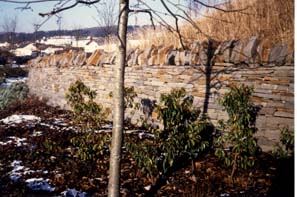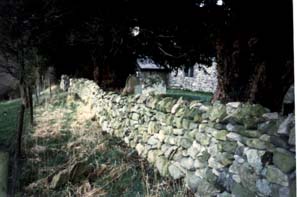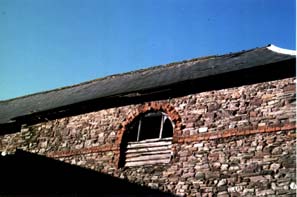

mr Philip Clark, Wales
THE IMPORTANCE OF STONE TYPE IN DRY STONE CONSTRUCTIONS
European Geology very varied; British Isles a good example of this.
Type of dry stone construction (walls, shelters,&c) varies according to local stone available.
Buildings demand more regular stones than field walls.
For dry stone purposes, rocks divide into stones that can be coursed (usually sedimentary), those that demand random construction (most igneous and metamorphic rock), and those that permit roughly coursed work ("random
coursing").
Whether rocks can be easily split along bedding planes also relevant
Whether field stones only are used (which in many areas includes glacial erratics) or whether local quarries are available.
Problems of water-worn stones
Areas with large boulders often have "single walls"; other areas have "doubled walls".
Availability of large stones for foundations and long stones for throughstones.
Types of coping for walls
A particular area: Mid Wales and South Wales coalfield (Ordovician to Upper
Carboniferous)

Recent new wall for lord authority at Merthyr Tydfil, South Wales

Newgarden wall, Llaneglwys, Breconshire

Recently rebuilt churchyard wall, Cefnllys, Radnorshire, Wales

Old Red Sandstone building in Brecon, Wales



